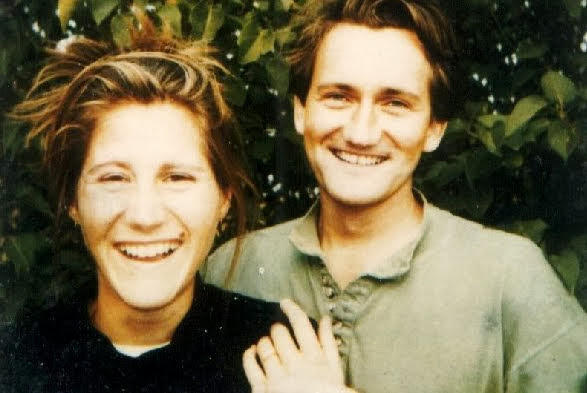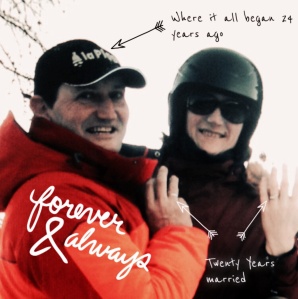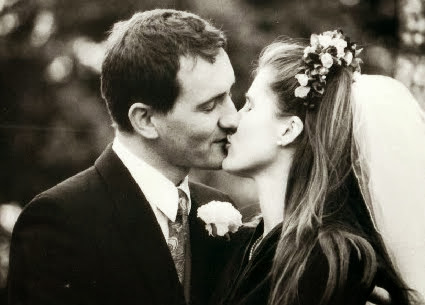Home » Posts tagged 'Arts'
Tag Archives: Arts
Why I’m loving learning about medicine and the arts
Medicine and the Arts: The University of Cape Town [Six Weeks] (3 hours pw) 68% completed
A couple of weeks to go. I’ve been on track and usually with fellow participants on this exciting, invigorating, inventive and important course. I would hold this up as the standard to copy: a team of contributors, the most senior and influence academics, and many other vibrant educators, health staff, performers and creatives. Most if not all the FutureLearn learning tools are used, so activities include short videos, all professionally shot and modest in length, micro-assignments of 350 that are peer reviewed, well-thought through multiple-choice quizzes, additional reading and of course rich, insightful discussions with fellow participants. The icing on the cake are the glorious mosaic graphics: photographs of a huge mural on the University of Cape Town campus.
What love is
Fig.1. Recently engaged – early summer 1990 – showing off her engagement ring
Fig.2 23 years on from the above in 1990, 20 years on from our marriage in December 1993 – showing off our rings to mark our 20th wedding anniversary
‘Love is a temporary madness, it erupts like volcanoes and then subsides. And when it subsides you have to make a decision. You have to work out whether your roots have so entwined together that it is inconceivable that you should ever part. Because this is what love is. Love is not breathlessness, it is not excitement, it is not the promulgation of promises of eternal passion, it is not the desire to mate every second of the day, it is not lying awake at night imagining that he is kissing every cranny of your body.
That is just being “in love”, which any fool can do.
Love itself is what is left over when being in love has burned away, and this is both an art and a fortunate accident.
We have roots that grow towards each other underground, and when all the pretty blossom has fallen from our branches we find that we were one tree and not two.
(Slightly adapted from Louis de Bernieres, 1994, ‘Captain Corelli’s Mandolin’)
Fig. 3. Just Married – 29th December 1993, Barton-on-the-Heath … and straight onto a pane to go skiing.
A question of blogging
Fig.1. Why blog?
A) What is the research trying to find out; what questions is it trying to answer?
B) How will the proposed research answer the questions?
C) Why is this research worth doing? Punch (2006:05/60)
My interest and participation in blogging is obvious. I am exploring other subjects to research, but inevitably come back to this. There are fields where blogging works, and others where it does not.
Do you think that students who keep a blog learn more?
Retain more? And so get more from their undergraduate studies?
Are certain subjects more appropriate for this where writing and digital literacies are being developed?
Such as:
- journalism,
- corporate communications,
- advertising (social media and copywriting)
- creative writing and even postgraduate research?
Blogs also mean generating, collecting and curating images and video
What role do these play in personal and professional writing?What if it is made compulsory, a graded component of all or part of a module you are taking?
What about those in the visual arts such as designers and art directors, who create concept boards for development purposes, or for architects and fashion designers, as well as in the performing arts such as actors and directors?
Might those following vocational subjects such as medicine or law set in train a way to enhance a life of learning?
Could blogs be peer graded successfully?
What benefits do you get from reading or contributing to another persons blog?
Is it less a blog and more of a publication when others contribute and the ‘blog’ carries advertising and is available to read only through subscription?
What do we learn by thinking of the origins of blogging as keeping a diary, log or journal, such as the private diary, journey log in a yacht, or writers journal?
Is it just electronic paper?
‘Tell the reader what QQ the researcher is trying to answer, or what questions will initiate the inquiry in an unfolding study.’ Punch (2006: 65)
Another way to gather your thoughts and ideas?
When is a blog an e- portfolio? What does it reveal about the person if the blog is shared?
Are like-minds attracted to each other?
What are the copyright and other legal issues?
How honest or revealing should one be? Are the concerns about exposure and disclosure valid?
It’s not what you remember about yourself that is of concern, but what you remember about other people. What they did, who they were with …
When does truth turn into fiction and does it matter if the reader cannot tell and isn’t told?
What about plagiarism?
What is the perspective behind the research?
What is the role of theory?
What is the prestructured versus unfolding research?
What is the relevant literature?
Will the study be quantitative, qualitative or both? Punch (2006:60)
‘The proposal should indicate the significance of the proposed study. Synonyms for ‘significance’ here might be justification, importance, contribution or intended outcomes of the study.’
Punch (2006: 68)
REFERENCE
Related articles
- ON BLOGGING /1: Blog Brunch March ’13 (javaaficionado.com)
- Could blogging be seen as a scholarly activity? (mymindbursts.com)
- All you need to know about blogging that you can’t be bothered to research for yourself because you’re too busy blogging … (mymindbursts.com)
- No Doubt: Blogging Is Good for Business (zemanta.com)
- A Contemplative 1,000th Blog Post (timesflowstemmed.com)
- Driving learning through blogging: Students’ perceptions of a reading journal blog assessment task. (mymindbursts.com)
Could blogging be seen as a scholarly activity?
This are me thoughts from reading:
An empirically grounded framework to guide blogging for digital scholarship
Heap & Minocha (2012),
Fig.1. Digital Scholarship with a nod to Martin Weller‘s book of the same name. (Created in 2011)
By stripping back the paper what do I learn from this paper:
- about blogging and digital scholarship
- about devising the research question(s) and method of research.
This quote from Axcel Bruns is wrong in relation to blogging.
‘Were originally more popular amongst journalism and business context’ Bruns (2007)
In fact, from my experience from 1999 onwards, journalists were highly dismissive and didn’t cotton on to blogging as a valid way to share their opinions for several years. The exception being financial journalism where breaking views on markets were fed, blog like, to subscribers,
Fig.2. An excerpt from my own early blog.
I was reading blogs in 1998, did some Dreamweaver training and if I’d got my head around FTP uploads I may have been up an away in 98 rather than 99 when I heard of Diaryland and joined the platform soon after it started.
Fig.3. An excerpt from a blog created by Claire Z Warnes in 1998
Over the next 4 to 5 years I saw a massive growth and influx of what by modern terms would have been described as journals, creative writing, fantasy, role play and social networking.
Fig.4. How I saw blogging in 1999/2000
I question why bloggers are defined by the institution they are at – the blog is more personal, like the noticeboard at someone’s desk in the bedroom or study, or a diary or journal they carry about with them, whether electronic or paper.
Fig. 5. We should stop seeing blogging in isolation – forms of ‘keeping a journa’, for whatever purposes, is as old a writing itself.
Little is ever mention of a history of keeping diaries, a writer’s journal or other kind of daily record for reflection or in scholarly circles to record the iterative process of a learning journey or a piece of research. John Evelyn was a diarist. Was he scholarly? What about Pepy’s he was keeping an historic record? For whom did Lady Anne Clifford keep a diary if not for an historic, even a legal record, of her rights to her father’s estates? (Lady Anne Clifford kept at a diary late 1500s into the 17th century).
Was Virginia Woolf using herself as the subject of an internal discussion?
What did Anais Nin learn and share about her writing as well as her personal journey, a journey that was shared with Henry Miller and that a couple of decades was taken by the filmmaker Francois Truffaut. As someone who had kept a diary since he was thirteen and had been typing it up and putting on disc for nearly a decade, the move to the web was a natural one.
- for personal reflection (e.g. Xie, Fengfeng, and Sharma 2008)
- collaborative working (e.g. McLoughlin and Lee 2008)
- developing writing skills (e.g. Warschauer 2010)
- flexible usage of blogs to suit the individual blogger’s needs, such as
- a space for reflection, to seek peer support, or both (e.g. Kerawalla et al. 2008).
I read blogs and corresponded with writers who were using the format to try out chapters of fantasy novels, to share poetry, to test webdesigns even to meet and indulge in intimate chat, role play and even cybersex. (Early blogs were the forerunners of a lot to come).
Whilst some of this activity isn’t within the parameters of ‘scholarly’ practice, certainly from a creative writing point of view self-publishing was.
From personal experience there were those exploring their personality, who were lonely, depressed or bi-polar. Most studies in English speaking countries … yet it was presumably going on elsewhere. And where does someone who is using writing in English in a blog to learn English stand in terms of being a student and a scholar?
Defining scholarship in the digital age
Boyer (1990) developed a conceptual framework which defines ‘‘scholarship’’ as a combination of teaching and research activities. In particular, he suggests four dimensions to define scholarship: discovery, integration, application and teaching.
Fig.6. Another excerpt from a blog for young writers created by Claire Z Warnes in 1998 when she was 17 herself. (I think she went off to study Computer Sciences)
The earliest bloggers played a teaching role, for example Claire Z Warnes set up a series of web pages to encourage and support young writers in 1998. She was teaching, they were exploring through reading, writing and sharing just as if they were meeting face to face in a classroom.
Boyer’s dimensions constitute an appropriate starting point for researching digital scholarship (Weller 2011).
Pearce et al. (2010) elaborated on Boyer’s (1990) model to theorise a form of digital/open scholarship, arguing that it is:
- more than just using information and communication technologies to research,
- teach and collaborate,
- embracing the open values, ideology and potential of technologies born of peer-to-peer networking wiki ways of working in order to benefit both the academy and society.
Which is exactly what Claire Z Warnes (1998) was doing, indeed, as some remaining posts that can be viewed show, it was as if she were becoming the Dean of one of the first online creative writing classes.
In relation to the research here’s the problem that needs to be addressed:
There is a lack of empirical evidence on how the openness and sharing manifested in blogging can influence academia, research and scholarship. (Minocha, p. 178. 2012)
Discussion
‘We have found that blogs seem to occupy an intermediate space among established writing forms such as peer-reviewed academic papers, newspaper articles, diaries, blurring the private public and formal informal divide ‘. (Heap and Minocha 2011).
There is a growing awareness of blogging as a writing or communicative genre in academia and research and as a new form of scholarship (e.g. Halavais 2007).
- to ensure validity of work through established forms of publishing,
- to integrate blogs so that research findings reach more readers
- to enable sharing information without time lags involved in formal publications.
The next steps in our research (according to the authors of this paper) are to validate the effectiveness of the framework (they developed) as a thinking tool about digital scholarship, and for guiding the practice of blogging in academia and research.
REFERENCE
Heap, Tania and Minocha, Shailey (2012). An empirically grounded framework to guide blogging for digital scholarship. Research in Learning Technology, 20(Supp.), pp. 176–188. (Accessed 28th February 2013 http://www.researchinlearningtechnology.net/index.php/rlt/article/view/19195 )
Weller, M (2011) The Digital Scholar
Related articles
- All you need to know about blogging that you can’t be bothered to research for yourself because you’re too busy blogging … (mymindbursts.com)
- Scholarly Blogging (malmsy.net)
- What my pink highlighter taught me. (dfbierbrauer.wordpress.com)
- Essay on placing academic work in the right scholarly context (insidehighered.com)
- Driving learning through blogging: Students’ perceptions of a reading journal blog assessment task. (mymindbursts.com)
- Exploring students’ understanding of how blogs and blogging can support distance learning in Higher Education (mymindbursts.com)
- Digital Curation Bibliography: Preservation and Stewardship of Scholarly Works XHTML Version (digital-scholarship.org)
- Blogging Inspiration, Where Does it Come From? (prefs.zemanta.com)
Close engagements with artificial companions
My interest here is the shift from science-fiction to fact – that AI – artificial intelligence on the web can and is delivering support. This will manifest itself in various ways, including support and assessment of early drafts of written assignments, possibly reading a blog to comment where others don’t … and to aid those who are isolated or at odds with the technology.
This book takes it into the realm of companions, as talking ‘pets’, as reflections of the user and potentially even after many years of support becoming a virtual record or avatar of the deceased.
I’m 1/3rd the way through a first read. In due course I’ll return for a second read and share some of the ideas and issues.
Related articles
- From Physics to AI – Where Artificial Intelligence Went Wrong (gettherefromhere.org)
- Cambridge to study technology’s risk to humans (phys.org)
- Six scientists tell us about the most accurate science fiction in their fields (io9.com)
Inspiration
Fig.1. Inspiration courtesy of a pad of cartridge paper, the Royal Academy of Arts, designers in residence at the Design Museum, Mirrielees on Story Writing and Robert Gagne‘s ‘The Conditions of Learning’. There’s a guitar by the desk and a set of 6B pencils and a putty rubber out of vision.
For moments when the Muse calls … and when she doesn’t.
The cartridge paper and guitar would be on my Desert Island.
Drawing
Fig.1. Copse – Lewes – Snowfall January 2010
I did a dozen of these and still mean to complete a Triptych on a grand scale with Lewes Castle above the tree tops. Who is going to give me the space and three months to do it?
I’ll keep posting drawings until someone remembers I could draw before I could write or read.
But Mum would put 6B pencils into our hands and even age 4 we had a drawing board and cartridge paper.
Here’s your 2013 reading list – one a week for the year.
Creativity is improvisation … Edmund de Waal on pots, netsuke, writing and his desert island discs
Fig 1. Pots, Writing, Music and on being a Smarty Pants
Listen to it for yourself. What intrigued me where his thoughts on the creative process.
Edmund de Waal
Desert Island Discs
http://www.bbc.co.uk/radio/player/b01p067p
Sunday 25th November 2012
On describing his pots
“Rigorous but humane – I’d like that on my gravestone if possible”.
“The rest of the world falls away”.
“The challenge is always the same, what are you going to do next?”
On a very particular recording of Ella Fitzgerald – Mack the Knife – forgetting the words and improvising.
Ella FitzGerald sings : “What’s the next chorus to this song now. It’s the one – I don’t know. It’s a swing song, that’s the tune … Something about Louis Miller and something about cash … tell me … ”
“This is music as it should be. This is making it up as you go along. This matters to me because this is what the experience of making things is like. That’s improvisation. That’s when when you think you’ve got it made before you start. And then … it all goes … it doesn’t go wrong – it goes different. And then you have to … then you’re alive. That’s the moment of absolute aliveness. Which is what music is about … and about what I do is about”.
A course on creativity could be constructed from interviews and music featured on Desert Island Discs. Like any frustrated creative I listen to this and find myself turning to a short story or a sheet of cartridge paper.
(A netsuke of the kind Edmund de Waal shows Kirsty Young, a signed piece from the early 18th century, is likely to be worth £10,000 to £12,000.).
I prefer invention over recreation.
Others I’ve caught on Desert Island Discs include
Another potter, form whom ‘creativity is mistakes’.
Related articles
- Mistakes, and Recovering with Style. (indirectroutes.net)
- Edmund de Waal on Cy Twombly (telegraph.co.uk)
- Desert Island Discs by Sean Magee: review (telegraph.co.uk)
- Diversity and tolerance – a celebration of humanity (mymindbursts.com)


